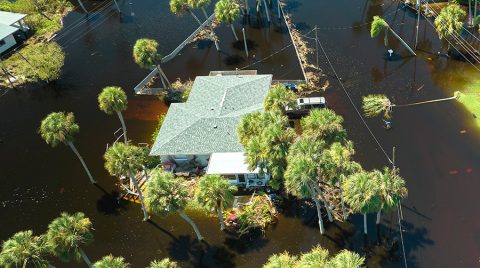-
Property & Casualty
Property & Casualty Overview

Property & Casualty
We offer a full range of reinsurance products and the expertise of our talented reinsurance team.
Expertise
Publication
Florida Property Tort Reforms – Evolving Conditions
Publication
Is Human Trafficking the Next Big Liability Exposure for Insurers?
Publication
When Likes Turn to Lawsuits – Social Media Addiction and the Insurance Fallout
Publication
Generative Artificial Intelligence and Its Implications for Weather and Climate Risk Management in Insurance
Publication
Engineered Stone – A Real Emergence of Silicosis
Publication
Who’s Really Behind That Lawsuit? – Claims Handling Challenges From Third-Party Litigation Funding -
Life & Health
Life & Health Overview

Life & Health
We offer a full range of reinsurance products and the expertise of our talented reinsurance team.

Publication
Understanding Physician Contracts When Underwriting Disability Insurance
Publication
Voice Analytics – Insurance Industry Applications [Webinar]
Publication
GLP-1 Receptor Agonists – From Evolution to Revolution U.S. Industry Events
U.S. Industry Events
Publication
Always On: Understanding New Age Addictions and Their Implications for Disability Insurance
Publication
Dying Gracefully – Legal, Ethical, and Insurance Perspectives on Medical Assistance in Dying -
Knowledge Center
Knowledge Center Overview

Knowledge Center
Our global experts share their insights on insurance industry topics.
Trending Topics -
About Us
About Us OverviewCorporate Information

Meet Gen Re
Gen Re delivers reinsurance solutions to the Life & Health and Property & Casualty insurance industries.
- Careers Careers
Money to Burn? Recycling Risks Reconsidered

April 24, 2018
Leo Ronken
English
The waste sector plays an important role in the global economy. Overall, the recycling industry supplies around 40% of the world’s raw material needs. The sector’s annual turnover is estimated at more than $200 billion.
But recycling sites are complex and challenging risks for insurance underwriters. The numbers speak for themselves: Germany had approximately 1,400 losses in the 10-year period 2005 to 2014; in the UK, the recycling industry accounted for 4,321 fires from 2001 to 2013. It’s a similar, worrying picture around the world, from Canada to Australia.
The waste sector encompasses a wide variety of materials and operations can involve many different processes, technologies and disposal techniques. However, they all have one thing in common - a high fire load. Materials that constitute waste - paper, cardboard, textiles or plastics - are highly flammable and easy to ignite.
Unfortunately, site operators frequently maintain poor housekeeping standards, low levels of worker training and inadequate loss prevention measures. The nature of the business also means recycling facilities cover large areas that are often unattended.
Insufficient investment in adequate risk protection measures is another common problem. Too often, the inherent exposures of the particular recycling process are not even recognized nor are they accepted by the facility owners.
The damage caused by a fire in a recycling facility is rarely restricted to the loss of materials, buildings and machinery. Smoke and vaporized toxic material tends to spread into the surrounding area, leading to environmental impairment. Clean-up costs can be high, especially as extinguishing water used to fight a fire is often toxic and needs to be retained, cleaned and then disposed of conclusively.
It’s clear that a straightforward property cover is not adequate to deal with the aftermath of a fire that leads to a shutdown. A commercial policy that is not adapted to the characteristics of a recycling facility is almost certain to produce some unpleasant surprises during the loss adjusting process.
The economic consequences of a serious fire at a recycling centre can be far reaching. Costs can include contract penalties, loss of license and the necessity of new, if only temporary, premises to allow the operator to stay in business.
Additional financial loss can stem from commodity prices because profit margins in the recycling industry depend on the price commanded by waste and recycled materials. The burned stock value or the gross profit margin could be much higher than was originally anticipated when the insurance policy was issued.
Extensions, such as additional increased cost of working (AICOW), can inflate a potential claim even further.
Not surprisingly, such an array of diverse challenges has led some insurers to stop writing recycling risks altogether. That could be a missed opportunity.
However, at Gen Re we believe that most recycling plants can be insured. We’ve built up extensive know-how in the area over the years and, with the help of cedants, we’ve developed some specific reinsurance solutions for the recycling industry.
These solutions require not only compliance with certain security and fire prevention standards but adjusting the insurance premium rate to reflect the particular exposures of a given risk.
For more information on this topic, read my article, “Insuring Recycling Centres – Money to Burn?”
If you want more detail on how these products work, or have a specific question, please don’t hesitate to contact one of our representatives.





